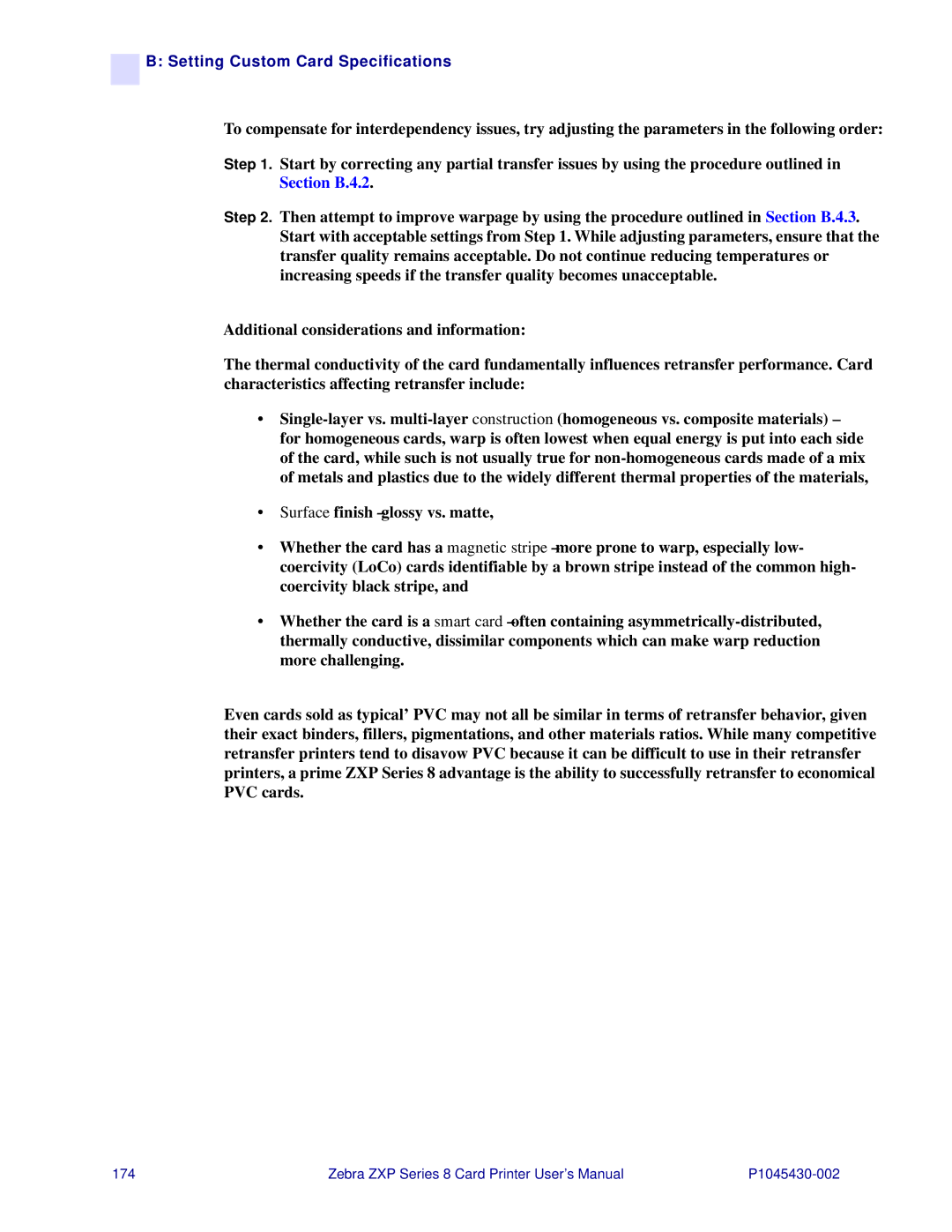![]()
![]() B: Setting Custom Card Specifications
B: Setting Custom Card Specifications
To compensate for interdependency issues, try adjusting the parameters in the following order:
Step 1. Start by correcting any partial transfer issues by using the procedure outlined in Section B.4.2.
Step 2. Then attempt to improve warpage by using the procedure outlined in Section B.4.3. Start with acceptable settings from Step 1. While adjusting parameters, ensure that the transfer quality remains acceptable. Do not continue reducing temperatures or increasing speeds if the transfer quality becomes unacceptable.
Additional considerations and information:
The thermal conductivity of the card fundamentally influences retransfer performance. Card characteristics affecting retransfer include:
•
•Surface finish – glossy vs. matte,
•Whether the card has a magnetic stripe – more prone to warp, especially low- coercivity (LoCo) cards identifiable by a brown stripe instead of the common high- coercivity black stripe, and
•Whether the card is a smart card – often containing
Even cards sold as ‘typical’ PVC may not all be similar in terms of retransfer behavior, given their exact binders, fillers, pigmentations, and other materials ratios. While many competitive retransfer printers tend to disavow PVC because it can be difficult to use in their retransfer printers, a prime ZXP Series 8 advantage is the ability to successfully retransfer to economical PVC cards.
174 | Zebra ZXP Series 8 Card Printer User’s Manual |
